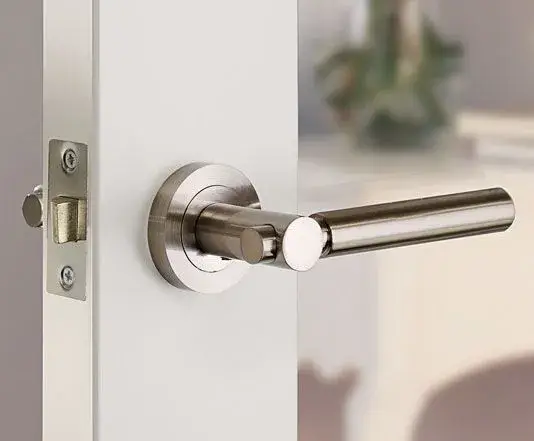Fiberglass is a material often used in mattresses as a fire barrier due to its non-combustible properties. While it can be effective in preventing fires, exposure to fiberglass can cause health issues such as skin irritation, respiratory problems, and eye discomfort. Therefore, it’s important to know if your mattress contains fiberglass and how to handle it safely. This guide will walk you through the steps to identify and manage fiberglass in your mattress.
Understanding Fiberglass in Mattresses

What is Fiberglass?
Fiberglass consists of fine fibers made from glass and is used in various applications due to its durability and heat-resistant properties. In mattresses, fiberglass is commonly used as a fire retardant layer beneath the outer cover.
Why is Fiberglass Used in Mattresses?
Mattress manufacturers use fiberglass to meet fire safety regulations without using chemical fire retardants. It’s cost-effective and effective in preventing fires, which makes it a popular choice.
Potential Health Risks
When the fiberglass-containing cover of a mattress is damaged or removed, the tiny glass fibers can be released into the air, posing health risks. Direct contact with fiberglass can cause skin irritation, and inhaling the fibers can lead to respiratory issues.
Signs That Your Mattress Might Contain Fiberglass
Manufacturer’s Label
The easiest way to check if your mattress contains fiberglass is by reading the manufacturer’s label. Look for mentions of “fiberglass,” “glass fiber,” or “fire retardant materials.” These labels are usually found on the mattress tag or in the product specifications.
Product Specifications and Manuals
Check the product manual or specifications online. Manufacturers often disclose the materials used in their products, and this information can usually be found on their website or in the product manual that came with the mattress.
Appearance and Feel
Although it’s not always a reliable method, you can sometimes identify fiberglass by its appearance and feel. Fiberglass layers often look like a mesh or fabric and can be somewhat rough to the touch. However, this method is not foolproof and should be used with caution.
How to Safely Inspect Your Mattress
Initial Precautions
Before inspecting your mattress, ensure you take the following precautions to minimize exposure to fiberglass:
- Wear Protective Gear: Use gloves, long sleeves, and a mask to protect your skin and respiratory system.
- Prepare the Area: Conduct the inspection in a well-ventilated area, and if possible, take the mattress outside to avoid contaminating your home.
Step-by-Step Inspection
- Remove Bedding: Carefully remove all bedding and mattress covers.
- Check for a Zipper: If your mattress cover has a zipper, do not open it. Many mattresses with fiberglass have a non-removable cover to keep the fiberglass layer intact.
- Examine Seams and Edges: Look for any signs of damage or tears in the fabric. Fiberglass particles are more likely to escape from these areas.
- Feel for Texture: Gently feel the surface of the mattress cover. If it feels rough or gritty, it might indicate the presence of fiberglass.
Using a Flashlight
Shine a flashlight over the mattress cover. Sometimes, fiberglass can reflect light in a distinctive way, appearing as tiny, shiny particles.
What to Do If You Find Fiberglass
Do Not Remove the Cover
If you suspect your mattress contains fiberglass, do not remove the cover. Removing the cover can release fiberglass particles into the air, creating a health hazard.
Cleaning Up
If you’ve already removed the cover and discovered fiberglass, take the following steps to clean up safely:
- Vacuum Carefully: Use a vacuum with a HEPA filter to clean up fiberglass particles. Avoid using a regular vacuum, as it can spread the particles.
- Wash Contaminated Items: Wash any clothing or bedding that came into contact with fiberglass separately from other laundry.
- Dispose of the Mattress: In severe cases, you may need to dispose of the mattress. Contact your local waste management service for proper disposal instructions.
Preventing Exposure
To prevent exposure, consider using a mattress encasement designed to contain fiberglass particles. These encasements are typically made of tightly woven fabric that prevents fiberglass from escaping.
Alternatives to Mattresses with Fiberglass
If you are concerned about the presence of fiberglass in your mattress, consider the following alternatives:
Organic Mattresses
Organic mattresses are made from natural materials such as organic cotton, wool, and latex. These materials are less likely to contain fiberglass and are often free from chemical fire retardants.
Mattresses with Natural Fire Barriers
Look for mattresses that use natural fire barriers such as wool. Wool is naturally flame-resistant and doesn’t carry the same health risks as fiberglass.
High-Quality Foam Mattresses
Some high-quality foam mattresses use non-toxic fire retardants or alternative materials that do not include fiberglass. Research brands that prioritize safety and transparency in their materials.




